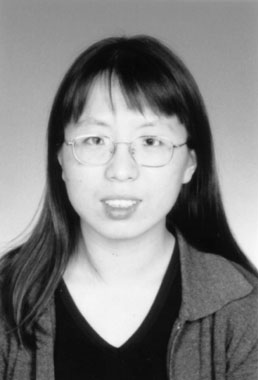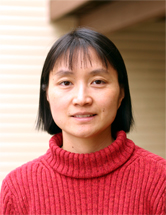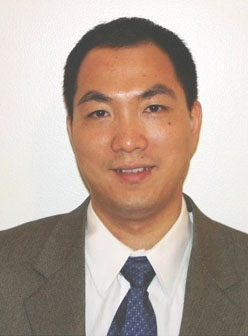The IASTED International Conference on
Communication, Network and Information Security
CNIS 2006
October 9 – 11, 2006
Cambridge, Massachusetts, USA
TUTORIAL SESSION
An Overview of Overlay Networks
Abstract
Objectives
Timeline
Tutorial Materials
Target Audience
Background Knowledge Expected of the Participants
Qualifications of the Instructor(s)s

Jun-Hong Cui received her B.S. degree in Computer Science from Jilin University, China in 1995, and M.S. degree in Computer Engineering from the Institute
of Computing Technology, Chinese Academy of Sciences in 1998. She received her M.S. in Computer Science from the University of Minnesota, Twin Cities in 1999 and her Ph.D. from the University of California, Los Angeles in 2003. In August 2003, she joined the Computer Science & Engineering Department at the University of Connecticut as an assistant professor. Dr. Cui’s research interests cover the design, modeling, and performance evaluation of networks and distributed systems. Recently, her research mainly focuses on exploiting the spatial properties in the modeling of network topology, network mobility, and group membership, scalable and efficient communication support in overlay and peer-to-peer networks, and algorithm and protocol design in underwater sensor networks. Dr. Cui is the director of UCONN’s UbiNet (Ubiquitous Networking) Lab and UWSN
(UnderWater Sensor Network) Lab. She has served on the technical committees of many networking conferences, including MASS'06, Networking'06, ICC'06, Globecom'06, QSHINE'06, SAWN’06, etc. She also serves as a demo chair of INSS’06 and a registration chair of MOBICOM’06. She is a member of ACM, ACM SIGCOMM, ACM SIGMOBILE, IEEE, IEEE Computer Society, and IEEE Communications Society.

Bing Wang received her B.S. degree in Computer Science from Nanjing University of Science & Technology, China in 1994, and M.S. degree in Computer Engineering from Institute of Computing Technology, Chinese Academy of Sciences in 1997. She then received M.S. degrees in Computer Science and Applied Mathematics, and a Ph.D. in Computer Science from the University of Massachusetts, Amherst in 2000, 2004, and 2005 respectively. Afterwards, she joined the Computer Science & Engineering Department at the University of Connecticut as an assistant professor. Her research interests are in Computer Networks, Multimedia, and Distributed Systems. More specifically, she is interested in topics on Internet technologies and applications, wireless and sensor networks, overlay networks, content distribution, network measurement, network modeling and performance evaluation. She is a member of ACM, ACM SIGCOMM, IEEE, IEEE Computer Society, and IEEE Communications Society.

Zhijie J. Shi is an assistant professor of Computer Science and Engineering at the University of Connecticut. He is the director of the Security and Architecture Laboratory at the University of Connecticut (SALUC). His current research interests are in the areas of computer security and computer architecture. He is interested in the security of computer systems, sensor networks, and overlay networks. He has been investigating the essential hardware that not only accelerates cryptographic algorithms but also provides efficient mechanisms for upper system layers such as operating systems and applications to achieve security goals. He is also interested in the design and application of new cryptographic algorithms that utilize novel operations to achieve the same level of security as existing ciphers but have higher performance and lower power consumption. In addition, he has been working on several projects in computer architecture, such as high-performance and low-power processor for multimedia information processing, underwater sensor node, and system designs for underwater wireless sensor networks. He is a member of Association for Computing Machinery (ACM) and Institute of Electrical and Electronics Engineering (IEEE). He received his Ph.D. degree in Electrical Engineering from Princeton University in 2004 and the M.S. and B.S. degrees in Computer S
References
| [1] |












